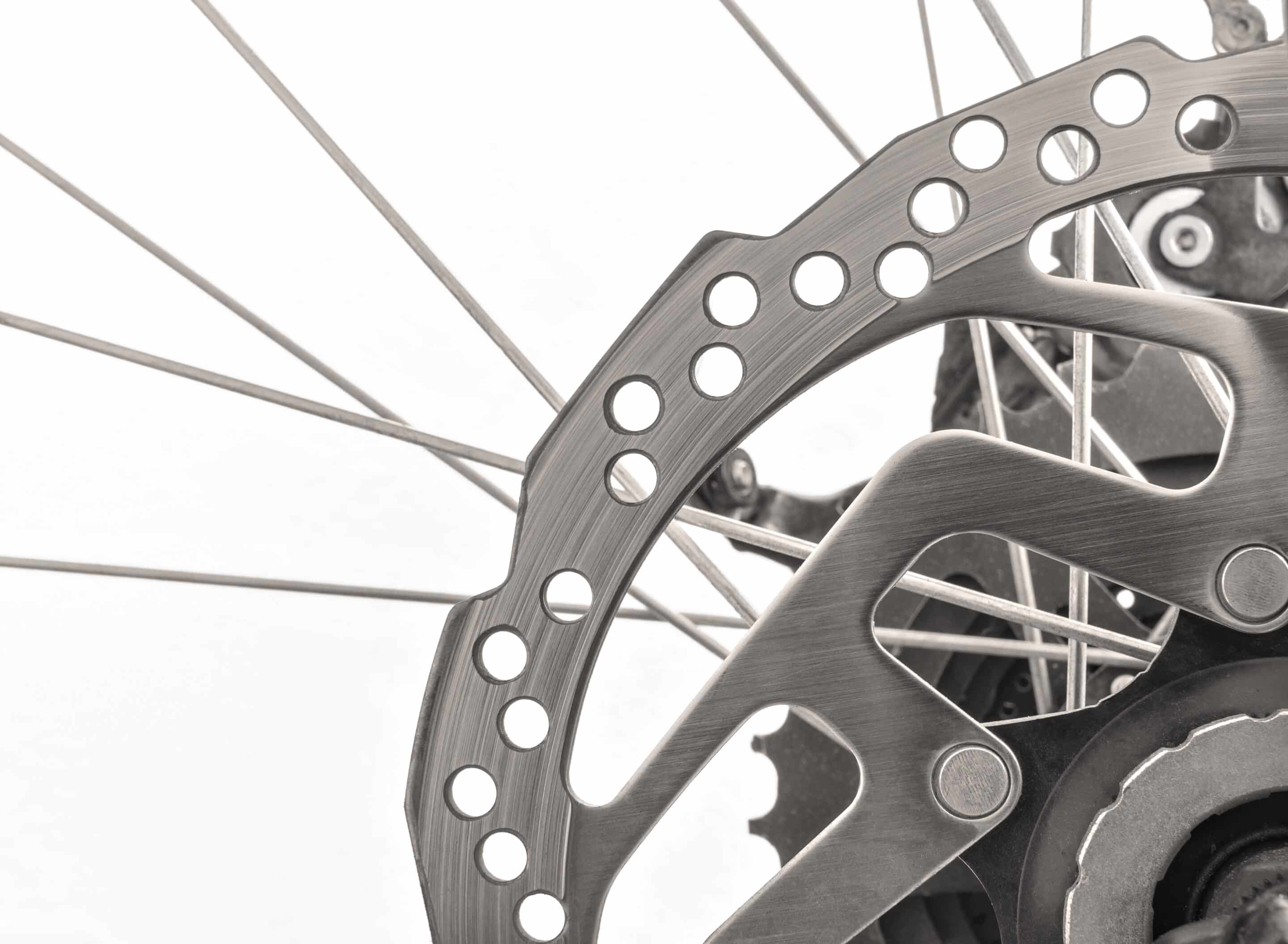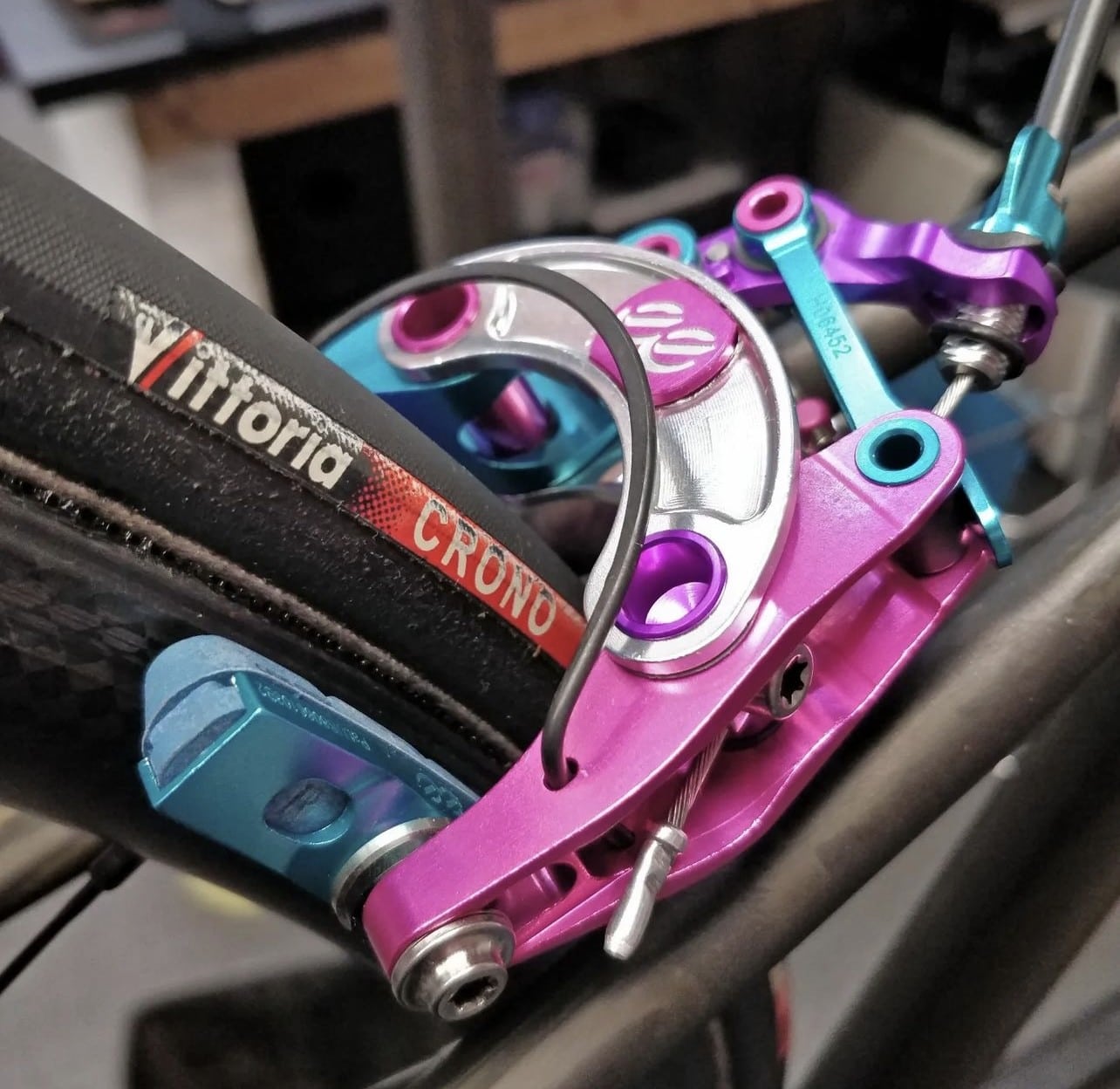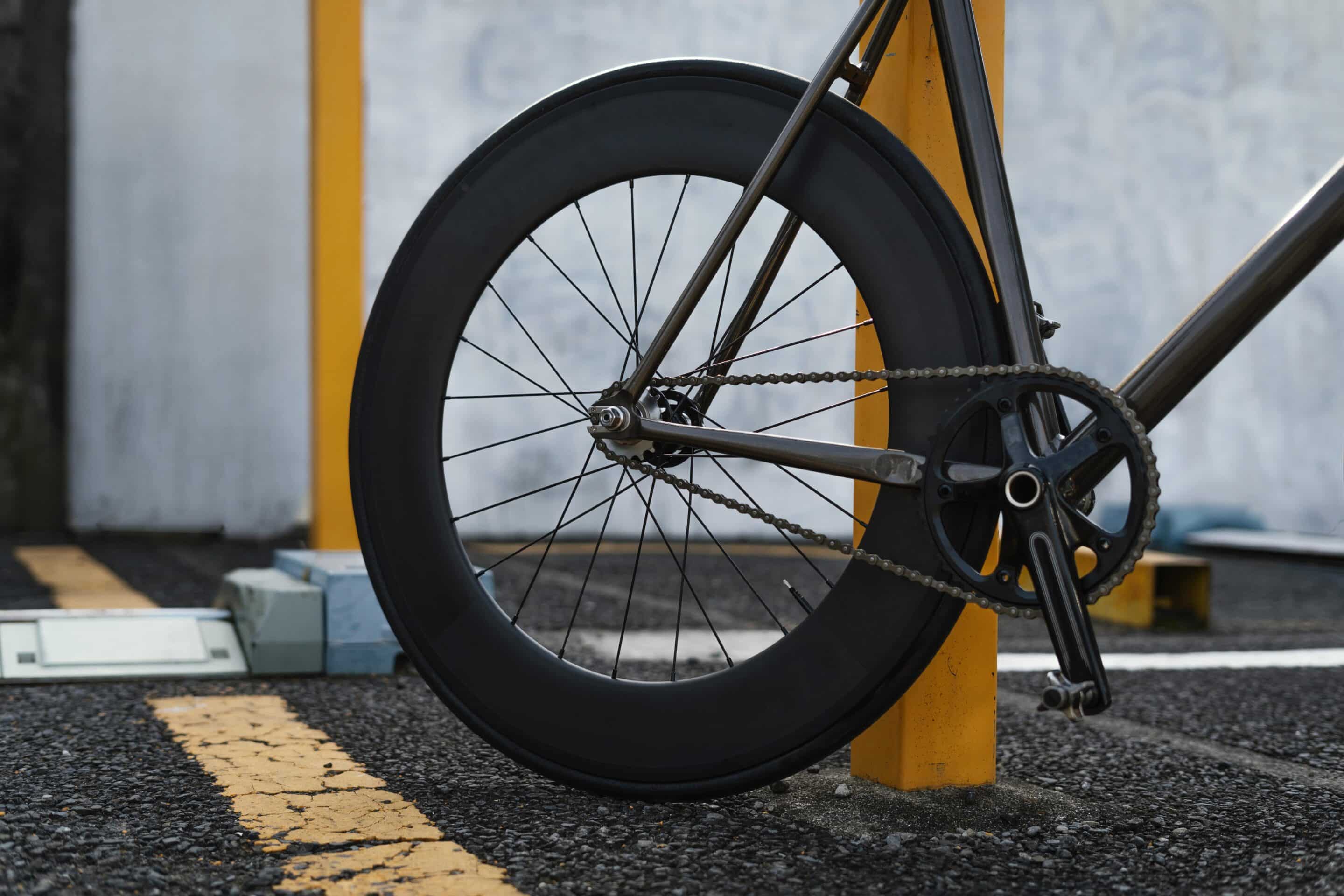What can and cannot be repaired on my wheels?
Just for a moment would you to consider what the difference is (other than the obvious shape and function) between a bicycle frame and a wheel? The wheel is under tension and the frame is not until sat on. This means that the wheel receives a double dose of stress when it is over loaded when it impacts something.
There are two major types of wheel braking systems we will cover:
Rim brake and disk brake. Suffice to say that at last the bike industry as broken clean away from the traditional bike and into the future in this regard. The disk brake wheel is free of a few important problems: mainly the total incompatibility of carbon rim brakes.
You might ask the question ‘how so if race cars use carbon brakes’ well then you need to look closer and you will note that there has never been a carbon wheel with a drum brake system nor a laminated carbon disk to my knowledge and for very good reason – abrasion and heat warpage. The very two by-products when stopping a wheel. Both these by-products score very low indeed in carbon form for which designers have some work arounds.
We can look at these in a bit

For now let us look at the disk wheel and the pitfalls associated with carbon:
Carbon repairers cannot offer to stress test a fracture repair to destruction. That in itself is obvious. It is why we use robotics to replicate the mould. There are therefore only a limited amount of repair locations which are safe to undertake. Unfortunately the industry is still obsessed it seems with clincher/ tubules rims in carbon. Why do I dislike them? Very simply because they are still an artefact of the alloy wheel era. They have no place on a carbon wheel. It is my opinion that the whole wheel tyre system needs to be reviewed seriously as disk braking is a great leap forward so let’s finish the job!
For a start we do not repair clincher walls if they are cracked through. Why? The carbon rim bead must be able to hold the wheel bead when the tyre is under side load. If this wall flexes open through a crack the tyre bead can slip off and the rest I will leave to your imagination. We simply do not know what the specified load is to ensure it is safe to restore. The better news is there are many other locations on the wheel, which get damaged that we can repair.
This ranges from flat tyre abrasion of the rim edge provided there is no crack though the wall. We can advise. This we inspect very carefully. The other repair locations are most of the side wall of the rim body and cowling all the way to the spoke. Unfortunately if the spoke has ‘pulled through’ we will not repair these either. Again there is no way to know how successful the repair is under additional load. A failure of a repaired spoke hole can bring the wheel into collapse without much warning. Not good and certainly not worth the cost or the risk so please stay away from repairers who claim this is repairable, it is not

Now onto the infamous rim brake wheel. Carbon is a great material but it is not perfect. In fact far from it. If you know what these shortcomings are then you can build wheels safely. I am therefore mystified as to why so many wheel manufacturers, knowing full well these incompatibilities, would even consider this. Carbon laminate is held together by epoxy or thermo plastic if your wheels are very new (there are no rim brake thermo plastic wheels on the market and I hope I never see them). Rim brake wheels manufacturers boast hi heat epoxy bonds on the brake surface so you were lead to believe that all was good. This is simply untrue because behind this very thin high heat wall is a bonding matrix (epoxy glue) which reacts to standard heat exposure up to near boiling point depending on the product. So why not make the whole rim with a high heat matrix? Simply because there is a trade off between bond strength and heat resistance at the time of writing this.
Armed with this information let me entertain you with a moment by moment failure of a rim brake wheel as it heats up. There are no exceptions!
As you begin to heat up the rim, occasionally you will create hotspots which start to achieve temperatures reaching boiling point and beyond. Forget the high heat brake surface epoxy -this is the ‘paint on a rusty ship.’ As these hotspots start to soften the epoxy laminate a few new forces start to enter the drama. The pressure of the tyre begins to deform the thin carbon clincher wall outward only to come into contact with an uncompromising brake calliper forcing the laminate back in. However during this rotation the deformation, depending on the extent of the shape change, is literally cut through by the calliper shoe and delaminates as you try to slow down to stop. What makes matters worse is the brake pad manufacturers make pads which get tacky as they heat thereby ensuring better braking grip. Unfortunately this generates enough heat to discolour the melting epoxy into a mess. I am sure some of you have tried to clean your rims of this ‘stain’ without much success. If that is the case and your wheels still look ok I would still get them to us for inspection.
It is so important to maintain the break track so you do not create any more friction than you need. My advice is to use alloy rimmed wheel sets such as the old Shimano C24 or Mavic alloy rimed wheels or equivalent to avoid any of this. Of course a weekend blast on your ‘all-carbon rim brake wheel set will be fine as long as you do not think that they are perfect for every type of terrain. This is simply not the case. You have been warned!
Hopefully you start to understand what it means to own a carbon wheel today. They are a lot safer in disk brake form as well at the through axle system but I would still very much like to see at the development of a carbon friendly tyre mount and spoke tension system to ensure a great product for cyclists to enjoy.


